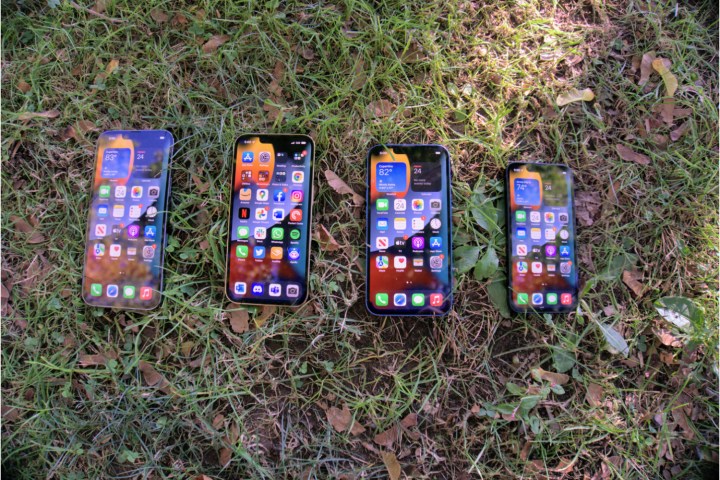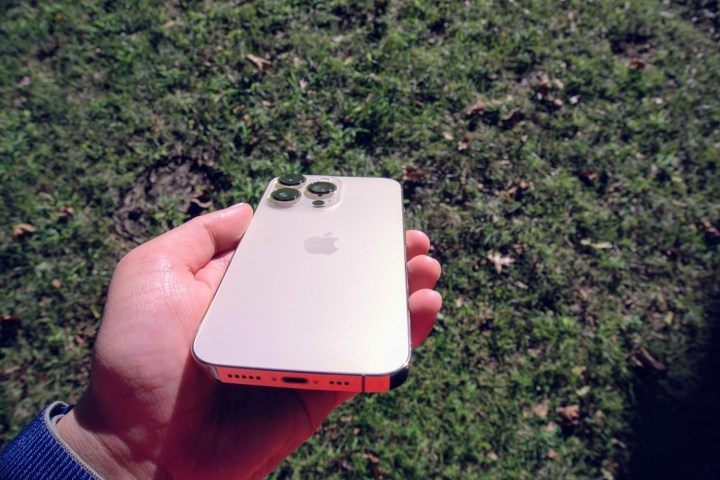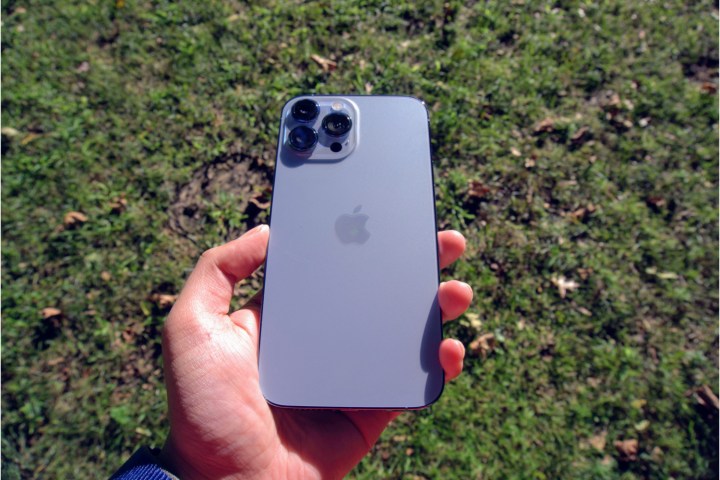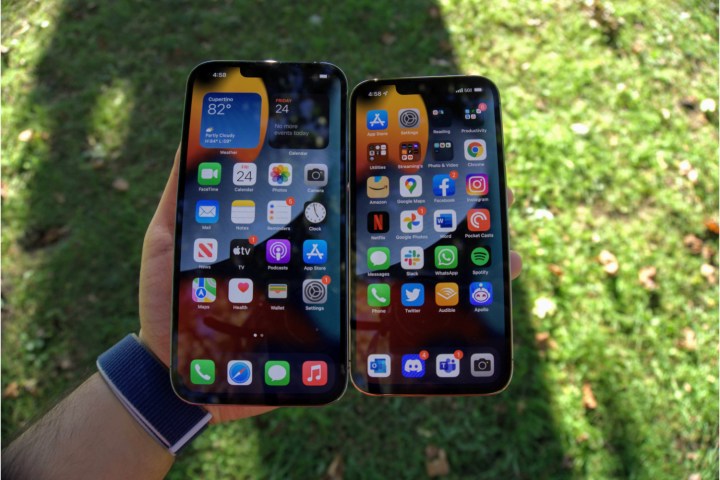The entire iPhone 13 lineup is heading into the hands of customers, and despite some misguided rumors, there weren’t any real surprises in terms of design and specs. After spending 24 hours with the iPhone 13, iPhone 13 Pro, iPhone 13 Pro Max, and iPhone 13 Mini, I feel like I have a good sense of their capabilities and who they’re for.
- Nothing revolutionary, but lots of nice touches
- It’s becoming harder to live without a USB-C port
- You don’t need the Pro Max to get the best camera experience
- Filling up 1TB of storage is daunting, but I accept the challenge
- Battery life is better than I expected so far
- I just can’t get used to phones as small as the iPhone 13 Mini anymore
Here are some of my key impressions and takeaways after using them for at least a full day.

Nothing revolutionary, but lots of nice touches
If Apple was sticking to its naming pattern, the iPhone 13 models would be rightfully called the iPhone 12S — and that might make sense. The design retains the 12’s flat-sided edges, there’s still Face ID and a Lightning charging port, and while the hardware is bumped up, it’s not hugely so. Other features continue to be carried over from the previous generation including MagSafe compatibility and multiple rear cameras, with most of the tweaks coming around the edges in the form things like a faster A15 Bionic processor, ProRes mode, bigger storage options, and high-refresh rate 120Hz screens for the Pro and Pro Max.
This is all good, great even. But if you have an iPhone 11 or iPhone 12 and you upgrade, don’t expect to be blown away. You won’t get anything particularly innovative, the way you might with a cutting-edge foldable like Galaxy Z Flip 3 or Z Fold 3, or the newly announced Microsoft Surface Duo 2. The iPhone 13 is very much an optional upgrade with some quality-of-life improvements like a 20% reduction in the size of the True Depth sensor notch and longer runtime, rather than a must-have leap forward.

It’s becoming harder to live without a USB-C port
Speaking of quality-of-life improvements, there is one that pains me more than I expected — the iPhone 13 continues to lack USB-C. Up till now, I hadn’t quite realized how much of my life has been taken over by USB-C. From my MacBook Air, Chromebook, and Nintendo Switch to my Samsung Galaxy Z Fold 3 and Razer Hammerhead True Wireless earbuds, pretty much everything I use on a daily basis charges with USB-C. Hell, even a portable cooler I picked up from a no-name Amazon brand comes with a USB-C port.
The only exceptions to my USB-C life are my aging Bose QC35 headphones which I’m eagerly waiting to replace with the USB-C equipped Bose QC45, and the Nook GlowLight 3 I want to scrap for the new Amazon Paperwhite, which, sure enough, has USB-C.

Now, enter the iPhone 13. I tried to find a place for it in my array of charging stations or USB ports scattered around my apartment, only to find that removing one of my cables requires me to engage in a complex puzzle game to prioritize what’s important to charge at a given time.
That’s fixable even if it’s a little annoying, but the bigger problem comes with commuting or traveling. I’m a frequent traveler, and the standard portable battery I use has a USB-C output port that supports Power Delivery. This means that I need to carry around a different battery with a USB-A port just to keep the iPhone 13 topped up, not to mention an additional Lightning cable, bringing me to a grand total of three different cables while traveling. Not ideal or convenient, and it really makes me hope that Apple makes the switch over to USB-C next year.
Apparently, the European Union agrees with me, because it’s planning on passing legislation to force Apple and other companies to ditch the Lightning port for USB-C by 2024. I never thought I’d say this, but thank you Europe.
You don’t need the Pro Max to get the best camera experience
It’s finally happened. After two generations, the Pro and Pro Max are now on par with each other except when it comes to size. It used to be that if you wanted the best, uncompromised iPhone experience when it came to the camera, you had to get the Pro Max. On paper, the specs looked awfully similar, but when you looked at the iPhone 12 Pro next to the iPhone 12 Pro Max, the latter was able to take better photos since it had a wide camera sensor that could handle lowlight better, 5x zoom rather than 4x, and sensor-shift for better stabilization.

That’s changed with the iPhone 13 Pro and iPhone 13 Pro Max. They now have 1:1 specs when it comes to cameras, so you won’t get better or worse photos on one versus the other. The only thing to be mindful of is that if you want to take advantage of ProRes video recording at 4K30, you’ll need to shell out for a 256GB model at a minimum — it won’t work with the 128GB base storage option, which makes me wonder why Apple bothered to still include it as an option. I suspect that some people will buy the more affordable base model and be disappointed that they’re not getting the full capabilities of their Pro device.
Aside from that, they also have the big Pro features that put them above the mainstay iPhone 13, namely the ProMotion screen that supports a 120Hz refresh rate, which can dynamically be varied depending on your usage to preserve battery life. That’s an excellent feature, and as someone who’s been using the Galaxy Z Fold 3 as my daily driver, it would be the one big thing I wouldn’t have been able to live without. Don’t let anyone tell you that you can’t notice the difference. My old iPhone 12 Pro Max now feels downright sluggish next to the iPhone 13 Pro Max.

Filling up 1TB of storage is daunting, but I accept the challenge
The iPhone 13 Pro model I received for review comes with 1TB of storage and, boy, let me tell you that I couldn’t be happier. On my old Galaxy S20 Ultra, I tossed in a 256GB SD card on top of the 128GB internal storage and I’ve used 84% of the internal storage and 54% of the SD card, so I still have plenty of ways to go before I get close to using it. So, why would I possibly need 1TB of storage on a phone, you ask? The answer goes back to travel.
As a frequent traveler, I take thousands of photos of the places I visit. Photos taken on my most recent trip to Iceland numbered in the several thousand, and there’s nothing worse than having to painstakingly sort, crop, edit, and upload those photos after a long day of travel to make sure you don’t run out of space. Cloud storage is a decent enough solution, true, but it requires extra subscription payment and services like Google Photos are increasingly limiting how much free storage you get and in what quality.

Then there’s downloading Netflix shows, Spotify albums, and games to have access to them in the airport, plane, abroad, and other places with dubious connectivity. There are plenty of things on my phone that I’d like to always have access to, and 1TB of storage gives me plenty of options and flexibility. I used to feel the same way about 1TB or 2TB NVMe drives for my gaming PC, wondering how I could possibly fill all that space. But the option of having the space has a way of making your needs and expectations rise, and I suspect that’ll be the case with the 1TB iPhone 13 Pro, too.
Battery life is better than I expected so far
Apple made a lot of hay about battery life improvements to the entire iPhone 13 series compared to the previous generation. I always take such claims with skepticism. I’m a power user, with my screen time averaging around five or more hours, so when companies say battery life is better, I’m always dubious about if that’s true for me. I can’t speak to the entire lineup, but I confirm that so far, it’s true for the iPhone 13 Pro. I took it off the charger at around 9:30 a.m. in the morning and was out in the city till about 2 p.m.

During that time, I used it for Spotify, with songs that weren’t downloaded on my phone, used Asana and Chrome while sitting in the dentist’s office, checked messages on Teams, and snapped a few photos on the way back. Despite around five hours of continuous usage, I was still left with what looked like a comfortable 70% of juice. That’s really impressive, especially for a phone I’ve just set up, since it usually takes the battery a few days to settle down.
Part of what’s at play here may be the adaptive refresh rate on the Pro and Pro Max. The rate can vary based on the content that’s on your screen, like a game, as well as how fast your finger is swiping. So, the refresh rate might kick up to 120Hz when playing a fast-paced shooter, but drops down to as low as 10Hz when you’re on just a webpage. The result is that battery life is better than rival Android devices with 120Hz screens that are only just now starting to get adaptive refresh rates and often have their higher rates disabled by default to preserve battery. That’s a testament to Apple’s habit of making sure new features are properly tweaked and refined before rolling them out to consumers. So far, it’s paid dividends in battery life, so the real test will be to see how the non-ProRes models like the iPhone 13 Mini and iPhone 13 measure up.

I just can’t get used to phones as small as the iPhone 13 Mini anymore
The iPhone 13 Mini is just tiny. It really is a baby phone with its 5.4-inch screen, and for someone who prefers bigger phones, it’s just too difficult to get used to. The screen is small, text and information are more cramped, and it has the shortest battery life of the bunch. Apparently, other people feel the same way, because we’re already getting rumors that the iPhone 13 Mini will be the last one in its series and Apple is killing the small model off next year in favor of another SE.
Editors' Recommendations
- Nomad’s new iPhone case and Apple Watch band may be its coolest yet
- iPhone 16: news, rumored price, release date, and more
- iPhone SE 4: news, rumored price, release date, and more
- There’s a big problem with the iPhone’s Photos app
- Why you should buy the iPhone 15 Pro Max instead of the iPhone 15 Pro




